#Sid Bernstein
Text
Felix Cavaliere Relays Rascal Energy Voicing Joy & Peace
Felix Cavaliere exerts an energetic appeal that has not waned since The Rascals, then known as The Young Rascals, first made an impact on the music scene in 1965 with “I Ain’t Gonna Eat Out My Heart Anymore” followed by “Good Lovin’.” Expressing peace, love, and happiness, the music has had a broad attraction for all ages.
Image Courtesy of Felix Cavaliere via Dis Company
With his most recent…
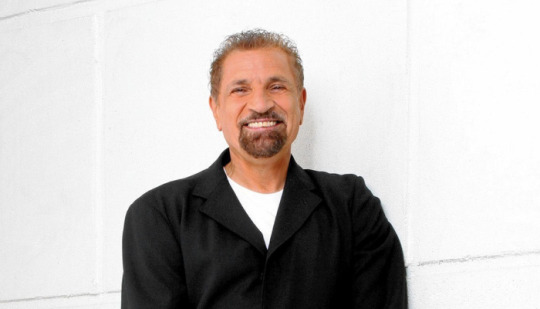
View On WordPress
#Aretha Franklin#Booker T#celebrity#David Cassidy#Dino’ Danelli#Dolly Parton#Dusty Springfield#Eddie Brigati#entertainment#Felix Cavaliere#Gene Cornish#Gloria Estefan#Good Lovin’#jazz#Joey Dee and the Starliters#Kenny Rankin#Lulu#Marvin Gaye#Micky Dolenz#music#Olivia Newton John#Sandy Scott#Sid Bernstein#The Rascals#The Young Rascals
2 notes
·
View notes
Text
youtube
0 notes
Text

Jacob Lawrence by Sid Bernstein, 1950s @archivesAmerArt
"He was influenced by Ben Shahn, Picasso, Stuart Davis, Arthur Dove, African sculpture, the Katzenjammer Kids, Maggie & Jiggs & the movies, high & low: he was open to almost everything." - Michael Kimmelman
1 note
·
View note
Text


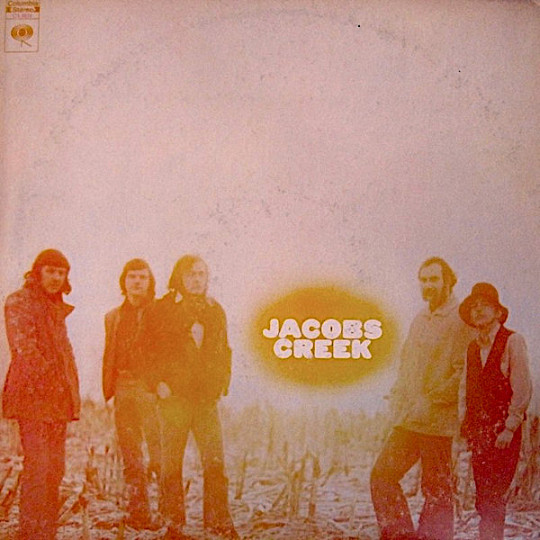



HAPPY BIRTHDAY to Casey Affleck, swamp pop singer Rod Bernard, Sid Bernstein, Joe Besser, Cantinflas, John Cazale, Kid Creole, Del The Funky Homosapien, Cecil B. DeMille, Leslie Duncan, George Hamilton, Roy Hay, Heintje, Mark Knopfler, Greg Langston (The Next, No Alternative), Ron Mael, Tiny McCloud, Pat Metheny, Sir Mix-a-Lot, Alexei Nikolaevich, Peter Ostroushko, Buck Owens, Marjorie Reynolds, Theodore Scaife, Erwin Alexander Schrödinger, Lakeith Stanfield, Matt Thiessen (Reliant K), Stefanos Tsitsipas, Mladen Vukic, Porter Wagoner, Deborah Walley, Wednesday 13, Jane Wyatt, and recording artist, singer-songwriter, and multi-instrumentalist Derrek Van Eaton.
Classic rock-philes and deep Beatles fans will recognize him from the brother band Lon & Derrek Van Eaton. Prior to their association with Apple Records (the record label created by The Beatles), they were part of the eccentric New York-based folk rock band Jacob’s Creek. They shared a studio with Simon & Garfunkel and released one album on Columbia in 1969. Two years later, John Lennon and George Harrison “discovered” them as a brother-act duo and signed them to Apple. The Van Eaton’s music blended urban folk and dreamy rock with a blues-gospel undercurrent, which perfectly coincided with the sounds of Badfinger and latter-day Beatles. The Van Eaton’s excellent BROTHER album was co-produced by George with Klaus Voorman. The Van Eatons toured the USA to promote BROTHER. Their 1972 tour brought them to where I was living in Huntingdon PA, where they played Ellis Hall at Juniata College (I stood listening from outside, a lad with no ticket money).
The BROTHER album launched a long association with George, Ringo Starr, Harry Nilsson, and other travelers in the Apple/Beatle legacy that unfolded in the 1970s. Then the Van Eatons became studio session players favored by producer Richard Perry, who hired them for recordings with Art Garfunkel, Martha Reeves, and Carly Simon. Perry also produced the Van Eaton’s 1975 WHO DO YOU OUT DO album. Following that era, the brothers created a non-profit film and music company called Imagine a Better World.
The Van Eaton brothers since have released sporadic works (duo and solo), notably their acclaimed 1996 cover of “Apple of my Eye” on the COME & GET IT Badfinger tribute album. In 2013 they issued a career-spanning anthology with new recordings with contributions from Ringo Starr, Jim Keltner, Klaus Voormann, and Gary Wright, and the Van Eatons are still active in musical and spiritual pursuits.
Some years ago I met Derrek some years ago at church we were both attending in Pennsylvania (where I picked his brains about that 1972 concert I heard but couldn’t see), and the last time we crossed paths was at a Monkees concert in Denver in 2011. Even in passive meet-ups I can see the creative spark in Derrek’s eyes. Here’s one of my favorite Van Eaton cuts “Sun Song” https://www.youtube.com/watch?v=T5VSJmb2VI0...Meanwhile, HB DVE and thank you for your years of remarkable creativity and soul.
#derrekvaneaton #lonanderrekvaneaton #brother #applerecords #birthday #georgeharrison #ringostarr #klausvoorman #richardperry #peteham #badfinger
#johnny j blair#singer songwriter#music#pop rock#Derek Van Eaton#Lon & Derek Van Eaton#brother#Apple Records#birthday#George Harrison#Ringo Starr#Klaus Voorman#Richard Perry#Pete Ham#Badfinger#The Beatles
7 notes
·
View notes
Text

Brian Jones and Bob Dylan during a record release party for the Young Rascals, held by Sid Bernstein at the Phone Booth nightclub, New York City. November 1965. Photo by Jack Robinson.
47 notes
·
View notes
Link
Check out this listing I just added to my Poshmark closet: POSTER The Beatles In Person Sid Bernstein Shea Stadium 8/15/1965.
0 notes
Text
Het perscentrum van het Holland Popfestival voor het restaurant 'de Plasmolens' en op de achtergrond molen 'de Ster', 26-28 juni 1970.
In de zomer van 1970 heeft in het Kralingse Bos de moeder aller Nederlandse popfestivals plaats: het Holland Pop Festival. Over het exacte aantal bezoekers van dit driedaagse evenement wordt tot op de dag van vandaag gediscussieerd. Sommigen spreken over wel 100.000 bezoekers. Dat het er meer zijn dan de 25.000 tot 30.000 waarop is gerekend, staat wel vast.
‘Kralingen’ is het Nederlandse antwoord op Woodstock. Sinds het enorme succes van dit Amerikaanse muziekevenement in 1969 zijn er allerlei pogingen gedaan om ook in Nederland zoiets van de grond te krijgen. Aanvankelijk lijkt Apeldoorn de beste papieren te hebben. De bekende muziekpromotor Sid Bernstein, een van de drijvende krachten achter Woodstock, heeft zijn oog op de Gelderse gemeente laten vallen als locatie voor zijn World Peace and Happiness Popfestival. Het plan valt echter in duigen omdat de burgemeester en het provinciebestuur niet meewerken.
In Rotterdam blijkt het klimaat dankzij C70 wél gunstig. De organisatie speelde al met het idee een groot popevenement te organiseren. Dus als de 36-jarige vertegenwoordiger Georges Knap zich meldt met het plan voor een popfestival aan de Plaszoom, krijgt hij alle ruimte. Met de hulp van de 22-jarige boeker Berry Visser van Mojo tuigt Knap een festival op met een ronduit indrukwekkende line up. Behalve Nederlandse band als Focus en Ekseption, staan er internationale groepen als Pink Floyd, Santana en Jefferson Airplane op het affiche.
De foto komt uit de collectie historiefoto's van het Stadsarchief Rotterdam. De informatie komt eveneens uit het Stadsarchief Rotterdam.

0 notes
Text
Here’s my pick for the best musical comedy of all time
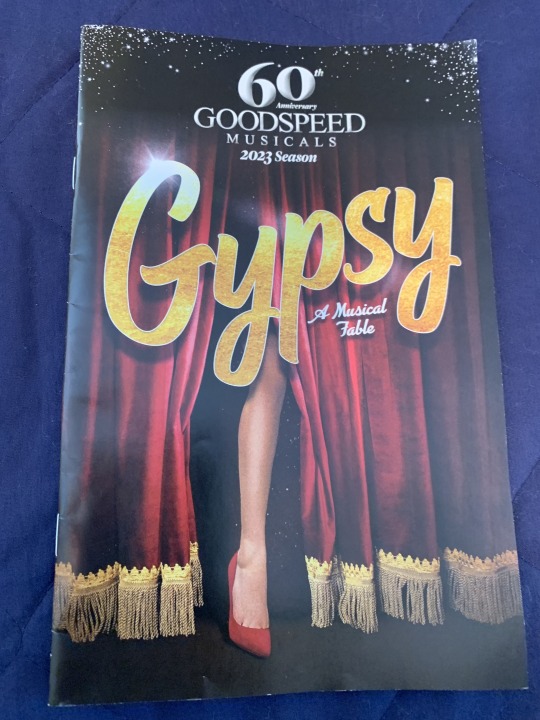
If I had to pick my favorite musical, it would be a very tough choice. I love “Seesaw” and “1776” and “Pippin” and “Merrily We Roll Along.” But if I had to choose what I consider to be the best musical ever written, it would have to be “Gypsy.” I was fortunate enough to see a production this week.
“Gypsy” was created in 1959 by roughly the same team who had created “West Side Story” on Broadway two years earlier, except that master songwriter Jule Style replaced Leonard Bernstein as composer. Stephen Sondheim again wrote the lyrics; Arthur Laurents wrote the book and Jerome Robbins directed.
The musical is the fictionalized life story of Gypsy Rose Lee, the famous burlesque star. But since this was to be a vehicle for the 51-year-old Ethel Merman, the central character is Gypsy Rose Lee’s mother, Rose, probably the greatest stage mother of all time.
The show takes us on a ride with Mama Rose, her two children, June and Louise, and her would-be husband Herbie, from the fringes of vaudeville in the 1920s to center stage at Minsky’s burlesque in the 1930s.
I think that if I were asked to introduce anyone to musical theater, I would start with “Gypsy,” because I think it is the perfect combination of book and music. The problem many people have with musicals is that the book is often simply a device to connect songs. That’s not the case with “Gypsy,” where the book is so strong it could actually stand on its own as a straight play without any songs and be entertaining. There are few musicals (notably “1776”) that can claim that.
The other thing that “Gypsy” has going for it is that it has quite simply the best overture of any Broadway musical. Orchestrator Sid Ramin, who also worked on “West Side Story” (with Irwin Kostal), took Jule Styne’s songs and created a masterpiece. Overtures traditionally were simply music to get people to sit down and shut up before the curtain went up. But this overture is a work of art. It perfectly creates the mood of the show to come and generates excitement and anticipation of a great night in the theater.
The overture begins with a cymbal crash and four quarter notes (A-D-A-E) played by the trumpets. Those four notes correspond to the words “I Have A Dream” that Rose sings at the beginning and end of the show (four years before Martin Luther King made those words immortal). In fact, the entire show is propelled by Rose’s dreams. The show opens with an example Rose’s bullying tactics as she works to fulfill her dream, this time to get her daughters into Uncle Jocko’s Kiddie Show.
But the second song of the show is the traditional “I Want” song where the protagonist sings about her goals in life. Here, in the hands of composer Jule Styne with Stephen Sondheim’s lyrics, we learn what makes Mama Rose tick. The song is “Some People” (you can hear Ethel Merman sing it at https://youtu.be/U_r5SizITAE). The scene is Rose’s father’s house where she is trying to get him to give her $88 so she can put together an act to take on the road. She begins singing:
Some people can get a thrill
Knitting sweaters and sitting still—
That's okay for some people
Who don't know they're alive
Some people can thrive and bloom
Living life in a living room
That's perfect for some people
Of one hundred and five!
But I at least gotta try
When I think of
All the sights that I gotta see yet
All the places I gotta play
All the things that I gotta be yet
Come on, Poppa, whaddaya say?
Some people can be content
Playing bingo and paying rent—
That's peachy for some people
For some Hum-Drum People to be
But some people ain't me!
Like many extraordinary people, Rose can think of nothing worse than being ordinary. She has a dream, and now she uses the first four notes of the overture to sing about it:
I had a dream
A wonderful dream, Poppa
All about June and the Orpheum circuit—
Gimme a chance and I know I can work it
I had a dream
Just as real as can be, Poppa
There I was in Mr. Orpheum's office
And he was saying to me:
"Rose!
Get yourself some new orchestrations
New routines and red velvet curtains
Get a feathered hat for the Baby
Photographs in front of the theatre
Get an agent—and in jig time
You'll be being booked in the big time!"
Oh, what a dream
A wonderful dream, Poppa
And all that I need
Is eighty-eight bucks, Poppa
That's what he said, Poppa
Only eighty-eight bucks, Poppa
Unfortunately, her father has heard this song before and he’s having none of it. He wants her to get a job and settle down in Seattle. So he tells her:
You ain't gettin' eighty-eight cents from me, Rose!
(interesting fact: this line was voiced by Stephen Sondheim on the original cast album)
Rose replies:
Then I'll get it someplace else—but I'll get it and get my kids out!
Rose is determined to fulfill her dreams. And she’s going to do that by any means necessary:
Goodbye
To blueberry pie!
Good riddance to all the socials I had to go to
All the lodges I had to play
All the Shriners I said hello to—
Hey, L.A., I'm coming your way!
Some people sit on their butts
Got the dream—yeah, but not the guts!
That's living for some people
For some Hum-Drum People, I suppose
Well, they can stay and rot—
But not Rose!
And with that, Rose, her girls, and the show, hit the road. From then on, it’s a classic show business tale. Although the story was supposedly based on Gypsy Rose Lee’s autobiography, Gypsy apparently told Arthur Laurents to change anything he wanted for the sake of a good show. That’s why the full name of the show is “Gypsy—A Musical Fable.”
I make it a point to see “Gypsy” at least once a decade, and I listen to the score regularly. I wasn’t fortunate enough to see Ethel Merman as Mama Rose. (My parents weren’t likely to take a six-year-old to a show about a stripper.) But I saw the first Broadway revival in 1974 with Angela Lansbury, and several other productions since. The show is so strong that I can honestly say I’ve never seen a bad production. If you’ve never seen it, seek it out. If you have seen it, take others. And don’t be afraid to take children. There are lots of children in the show for heaven’s sake! Children need to see the power of the words “I Have a Dream.”
0 notes
Text
On this date in music….
October 21st
2016 - Leonard Cohen
Leonard Cohen released his last album, You Want It Darker, 17 days before his death. Cohen was in poor health while the album was being made, and never went to the recording studio, relying on his son Adam to handle the sessions and integrate his tracks. The title track was awarded a Grammy Award for Best Rock Performance in January 2018.
2014 - Wilko Johnson
Former Dr Feelgood guitarist Wilko Johnson said he has been "cured" of the terminal pancreatic cancer with which he was diagnosed in 2012. The 67-year-old was initially given 10 months to live after rejecting chemotherapy, but had radical surgery to remove the tumour earlier this year.
2013 - Sid Bernstein
Sid Bernstein, the concert promoter who staged early US shows by The Beatles and The Rolling Stones, died aged 95. Bernstein booked The Beatles for their legendary show at Shea Stadium in New York in 1965, which was the first concert to be staged in a stadium. Bernstein also promoted the Fab Four's gigs at Carnegie Hall in New York on their first US tour in 1964. He also arranged The Rolling Stones first five US gigs and shows for Judy Garland, Ray Charles and Tony Bennett.
1997 - Elton John
Elton John's 'Candle In The Wind 97' was declared by the Guinness Book Of Records as the biggest selling single record of all time, with 31.8 million sales in less than 40 days and raising more than £20 million for charity.
1976 - The Who
Keith Moon played his last show with The Who at the end of a North American tour at Maple Leaf Gardens, Toronto. On September 7, 1978, Moon died of an overdose of a sedative Heminevrin, that had been prescribed to prevent seizures induced by alcohol withdrawal.
1972 - Chuck Berry
Chuck Berry started a two week run at No.1 on the US singles chart with 'My Ding-A-Ling', his first and only US and UK No.1, 17 years after his first chart hit.
1972 - Curtis Mayfield
Curtis Mayfield started a four-week run at No.1 on the US album chart with soundtrack to 'Superfly'.
1967 - Lulu
Scottish singer Lulu started a five-week run at No.1 on the US singles chart with the theme from the film 'To Sir With Love'.
1965 - Bill Black
Bill Black, Elvis Presley's bass player, (1954-57), died four months after receiving surgery to remove a brain tumour, aged 39. With guitarist Scotty Moore, and Elvis Presley on rhythm guitar, Black played on ‘That's All Right (Mama)’, Heartbreak Hotel, ‘Baby Let's Play House’, ‘Mystery Train’, ‘Hound Dog’; ‘Jailhouse Rock’ in the late 1950s. Black, Scotty Moore and drummer D. J. Fontana toured extensively during Presley's early career. After leaving Presley Black formed Bill Black's Combo.
1965 - The Beatles
Wanting to improve on a previous recording session The Beatles started from scratch on a new song called 'Norwegian Wood (This Bird Has Flown)', finishing recordings in three takes. They also begin working on another new John Lennon song 'Nowhere Man.'
1965 - The Spencer Davis Group
The Spencer Davis Group recorded 'Keep On Running' at Pye Studios in London, England. The track went on to top the UK chart next January.
1958 - Buddy Holly
Buddy Holly's last recording session took place at Pythian Temple Studios, New York City. The songs recorded included 'Raining In My Heart', 'Moondreams' and 'It Doesn't Matter Anymore' which became a No.1 hit.
0 notes
Quote
He referred to the Beatles, and I loved it, as ‘my boys’. It was always 'the boys’. He always worried, 'Is security right? Have you taken care of this?’ He was always planning in advance for their safety.
Sid Bernstein, In My Life: The Brian Epstein Story by Debbie Geller
#'and i loved it' I'm glad people were as endeared as I am about it#The Beatles#Brian Epstein#Sid Bernstein#eppy and the boys#brian#quotes#in my life: the brian epstein story
150 notes
·
View notes
Photo




A 1965 Beatles performance contract and rider, both signed by Brian Epstein. The General Artists Corporation contract between NEMS Enterprises, Ltd. and Sid Bernstein Enterprises, Inc. was for the Beatles’ historic concert at Shea Stadium on August 15, 1965.
#The Beatles#Brian Epstein#Shea Stadium#NEMS Enterprises#Sid Bernstein Enterprises Inc#Sid Bernstein#Shea Stadium 1965#1965#60s#contract#US & Canada Tour 1965
57 notes
·
View notes
Video
youtube
Influences : #2 in an occasional series
“Cool” from West Side Story. Music by Leonard Bernstein with Sid Ramin and Irwin Kostal
10 notes
·
View notes
Photo


Aug. 23, 1966: A victim of Beatlemania was carried off while “more than 45,000 teen-age girls — and a few anguished parents as well” converged to listen to 30 minutes of “all but inaudible” Beatles tunes, The Times reported. Sid Bernstein, the concert’s promoter, who was disappointed that it had not sold out, “said he believed the days of English rock ’n’ roll groups, with the possible exception of the Beatles, were numbered,” The Times reported. “From now on,” he said, “It’ll be all American. Remember what I said — I’ve never been wrong before.” The Beatles’ last tour ended six days later. Photo: Barton Silverman/The New York Times
#Pop and Rock Music#Beatles#The#Sid Bernstein#black and white#nytimes#vintage#photography#The New York Times#Shea Stadium#New York Mets#1966#1960s#Beatlemania#Barton Silverman
130 notes
·
View notes
Photo

Sid Grossman "Sid Grossman (June 25, 1913 in Manhattan – December 31, 1955 in Provincetown) was an American photographer, teacher, and social activist. Grossman conducted workshops at the Photo League, the Henry St. Settlement, the Harlem Art Center, and privately in NYC and Provincetown, for almost twenty years.[1] The photographers he taught were many – including Lou Bernstein,[11] Lisette Model, Walter Rosenblum, Louis Stettner, Helen Gee, Arthur Leipzig (who is on record as calling Grossman “probably the most fantastic teacher I ever knew”)[9] and Leon Levinstein. Yet Grossman himself said, “I am not an instructor in any classical sense.” He insisted that his students take on the responsibility for making something of themselves. According to Jewish Museum curator Mason Klein, “Grossman increasingly insisted on the idea of being in the world in a particular manner, engaging with a certain consciousness as a photographer, and connecting to the camera in ways that made photographers question who they were.” One had to “live for photography,” in effect transforming and liberating oneself – in order to become a good photographer."
28 notes
·
View notes
Photo
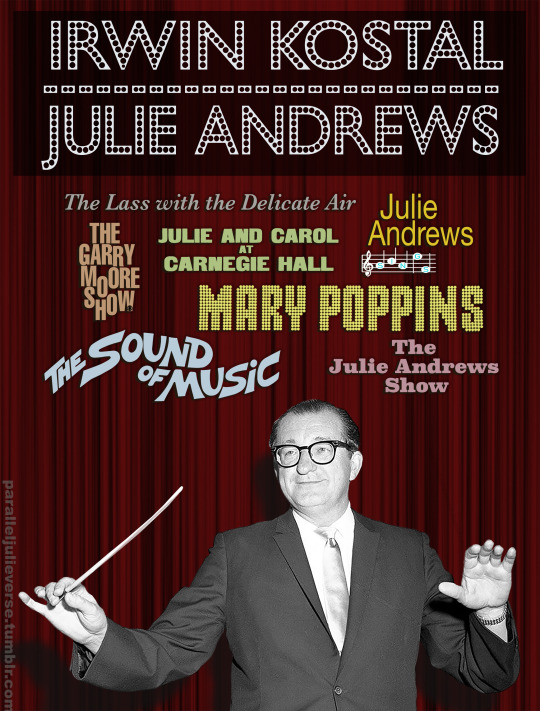
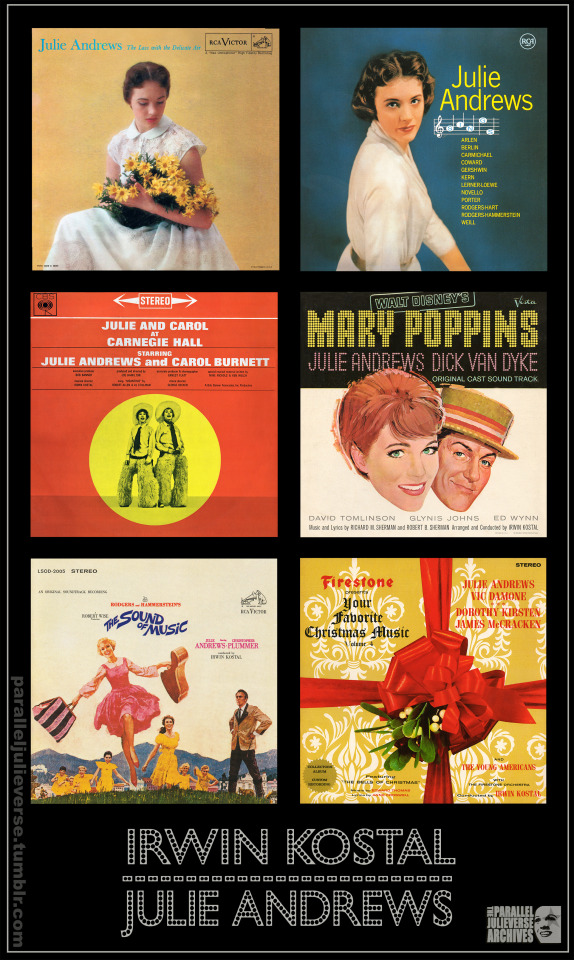

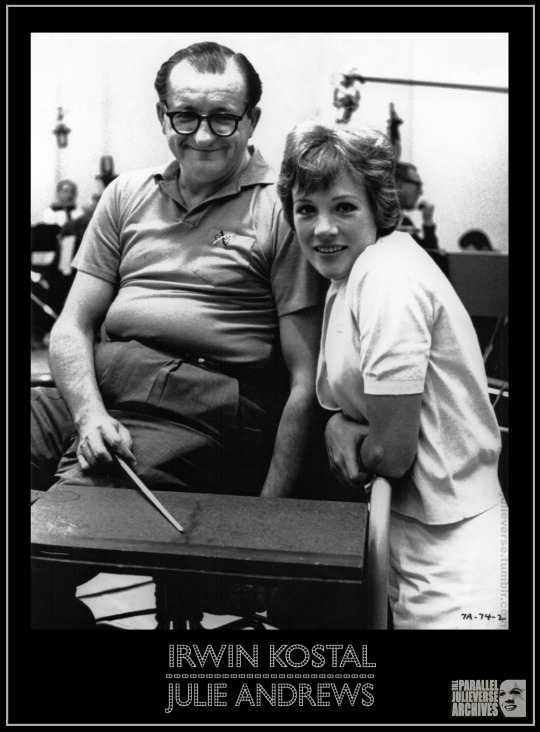
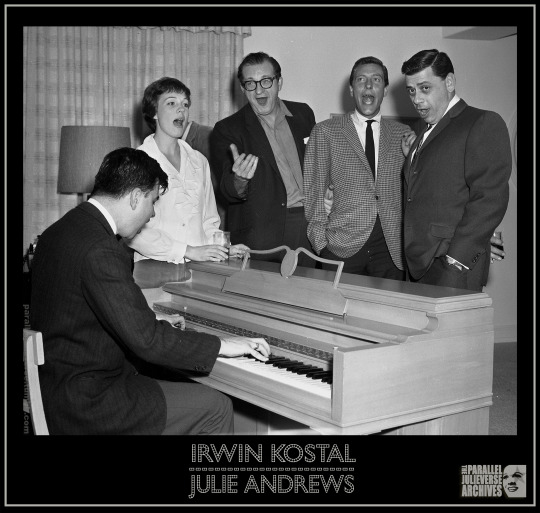

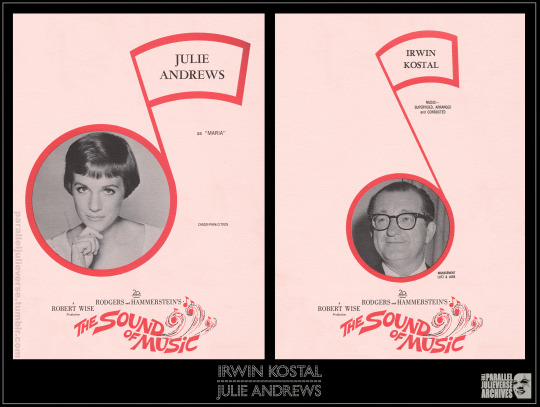
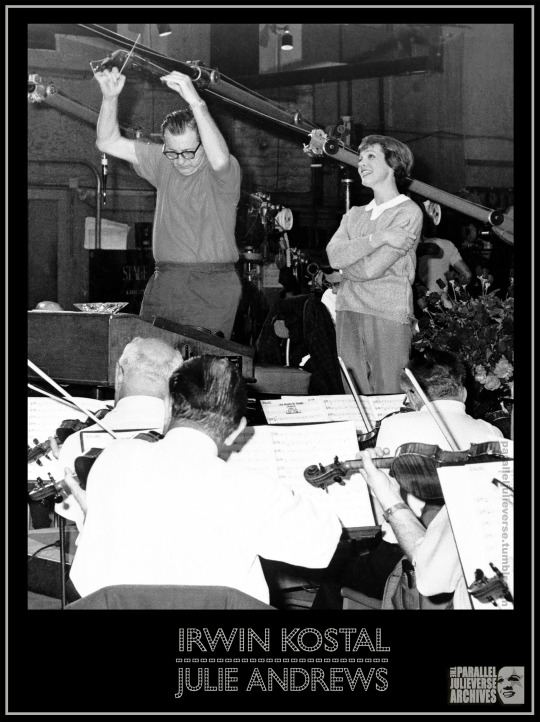

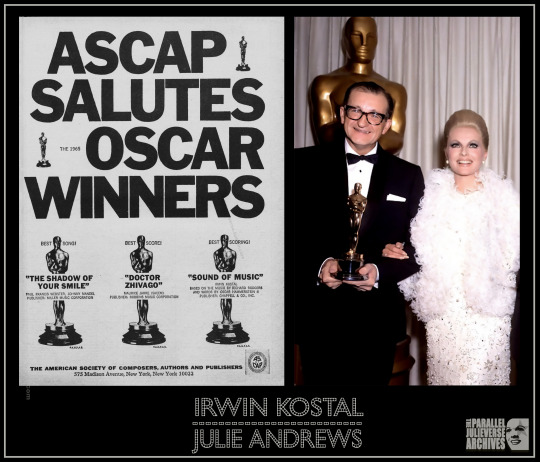
‘Gentlemen like you are few...’: A Supercentenary Tribute to Irwin Kostal
1 October 2021 marks the 110th anniversary of the birth of Irwin Kostal, the musical arranger, orchestrator and conductor whose work helped shape the sound of the post-war American stage and screen musical. In this post we look back at the career of this remarkable 'music man’ with a particular focus on his collaborations with the equally remarkable Julie Andrews -- who, as it happens, shares the same birthday, so this post is doing double birthday honours.
A gentle, unassuming man, Kostal or ‘Irv’ as he was known by associates, was not one for the limelight. It’s possibly why he gravitated to the ‘behind-the-scenes’ art of musical arranging. Unlike composers, performers, or even conductors, arrangers seldom loom large in public perceptions of professional musicianship. They are, for the most part, the ‘invisible artists’ of the music industry: their contributions to the sound and experience of music are immense, but they remain largely ‘uncredited in records, liner notes or books or records’ (Niles 2104, p. 4). That Irwin Kostal would ultimately prove a rare exception to this tradition of thankless anonymity -- becoming sufficiently well-known to have his own name not only included on recordings, but emblazoned on the front cover alongside those of the ‘star’ vocalists with whom he worked -- is a testament to the singularity of his talents.
Born the son of first generation immigrant parents in Chicago in 1911, Kostal claimed he was instantly ‘smitten’ by music when he saw a piano at the age of two-and-a-half, but his family was too poor to afford such luxuries. Moreover, his father -- a hard-drinking Czech with a fiery temper -- was ‘rigidly opposed’ to his interests in music and ‘could see no future in it’ (’Irwin’ 1962, p. 70). So Kostal initially had to content himself with listening and absorbing as much musical knowledge as he could indirectly. When he was eleven, his father finally brought home a broken player piano salvaged from a removals job and it provided the young Kostal with the launch pad he needed.
Kostal devoted himself to his musical education with single-minded zeal. His formal training was intermittent -- enabled by a supportive mother who ‘surreptitiously managed to save money from her weekly allowance for my musical instruction’ (’Irwin’ 1962, p. 70) -- but he was a passionate autodidact who would spend countless hours studying and practising on his own. By age 15, he was already playing professionally with local touring bands, while also offering his own services as a piano teacher with, at one point, more than 40 pupils (ibid.).
When he wasn’t playing, Kostal would be found in the local library poring over musical scores and reading about the greats of the classical canon. He was particularly intrigued by orchestration and the possibilities it offered for varying the sound and feel of music. He recalls how he would take orchestral scores home and study all the parts learning ‘about musical instruments I never knew existed’ (Suskin 2009, p. 56). He progressively worked his way through the music of the masters, going alphabetically:
‘Bach...Beethoven, Brahms, Debussy, Elgar, Frank, Gounod, on and on through the alphabet...I tried to absorb everything. By the time I came to Ravel, Tchaikovsky and Wagner, I knew quite a lot about music in a jumbled way’ (Suskin 2009, p. 57).
While still in his teens, Kostal started to experiment with arrangements of his own, scoring a high school production of Uncle Tom’s Cabin with multiple variations on the American folk melody ‘Way Down upon the Swanee River’. ‘By taking away the rhythmic aspects and playing it in a minor key,’ he recounts, ‘I found lots of ways to play this song, making it fit the dramatics of the half-hour long story’ (ibid., p. 56). Thus, Irwin Kostal the arranger was born.
Throughout the 1930s and early-40s, Kostal honed his talents in a professional capacity, working with various big bands, before finally landing a job as a resident arranger for an NBC radio affiliate in Chicago. Following the war, Kostal moved to New York where, after a rocky start, he secured regular work as conductor and arranger on a number of long-running radio and TV variety shows including Your Show of Shows (1950-54), Max Liebman Presents (1954-56), and The Garry Moore Show (1959-63). It was demanding, fast-paced work with Kostal having to arrange and orchestrate hundreds of score pages a week, but it consolidated his musical versatility and capacity to work across a wide range of styles and forms (Suskin 2009, pp. 57-60).
Throughout this period, Kostal was also orchestrating for Broadway shows, racking up over 52 credits on theatre productions big and small (Allen 1995, p. 18). Many of these assignments were done in a ‘ghost-writer’ capacity including contributing work to such classic musicals as Wonderful Town (1953), The Pajama Game (1953) and Silk Stockings (1955). A major breakthrough came when Kostal was contracted to work in a credited capacity as co-orchestrator on the original Broadway production of West Side Story (1958) -- collaborating with Leonard Bernstein, Stephen Sondheim and Sid Ramin. It earned him his first Grammy Award and a subsequent invitation to arrange and orchestrate a string of other big Broadway musicals including Fiorello! (1959), Sail Away (1961) and A Funny Thing Happened on the Way to the Forum (1962).
The success of West Side Story also saw Kostal do repeat honours on the film version (1961) which would, in turn, earn him an Academy Award and kickstart a hugely successful Hollywood career. In 1963, Kostal was invited by none other than Walt Disney to take on the major job of arranging the songs for Mary Poppins (1964) which had been written by the in-house Disney composing team of Richard M. and Robert B. Sherman. The Sherman Brothers claim to have suggested Kostal because they were fans of his Broadway work and they wanted a bright theatrical sound for the score. However, Walt Disney demurred. He reasoned it was a period film and they needed someone who could write music for any style or era, suggesting they get the musical director from The Garry Moore Show instead. Cue mutual delight when it was discovered they were all referring to the same man, Irwin Kostal (Sherman & Sherman 1998; Suskin 2009, p. 65).
Kostal’s work on Mary Poppins catapulted him to new heights of mainstream success. It not only secured him another Academy Award nomination -- he lost to Andre Previn for his work on My Fair Lady -- but it also brought him a tidy fortune in royalties from the film’s best-selling soundtrack album (’Kostal’s’ $65,000′, 57). His fame -- and fortune -- skyrocketed even further the following year when Kostal was contracted to arrange the score for The Sound of Music (1965). His dazzling efforts on this box-office blockbuster confirmed Kostal’s status as Hollywood’s presiding musical wonder-boy and saw him walk home with his second Oscar. A string of other big screen musicals followed including Half a Sixpence (1967), Chitty Chitty Bang Bang (1968) and Bedknobs and Broomsticks (1971).
Many of these films were repeat collaborations because Kostal favoured working with people he knew and with whom he clicked personally and creatively. He would for example continue as the de facto ‘house’ arranger for Disney well into the 1980s, working on various assignments for the studio including Pete’s Dragon (1978), Mickey’s Christmas Carol (1983) and the controversial re-recorded 1982 release of Fantasia (1940/1982) (Tietyan 1990). Kostal would also maintain a long association with the Sherman Brothers, acting as musical arranger for all their big screen musicals including the aforementioned Chitty Chitty Bang Bang (1968) and Bedknobs and Broomsticks (1971), as well as Tom Sawyer (1973); Charlotte’s Web (1973); and The Magic of Lassie (1978) (Sherman & Sherman 1998).
The other great collaboration of Kostal’s career was of course with Julie Andrews. Perhaps it was the fact that the pair shared the same birthday but Kostal had an extraordinarily sympathetic relationship with Julie and he would work with her more than any other vocalist. Long before they teamed on Poppins and The Sound of Music, Julie and ‘Irv’ were making musical magic together. Kostal was the arranger and conductor for Julie’s first two solo albums for RCA: The Lass with the Delicate Air (1957) and Julie Andrews Sings (1958) where his sensitive facility with a wide range of musical idioms from English classical to Broadway and Tin Pan Alley came to the fore. Reviewing the first of these albums at the time of its original release, one music critic lauded it as ‘a record to charm every member of the family...[with] a combination of sincerity and simplicity and wholesome sweetness...Thank goodness arranger and conductor Irwin Kostal met the challenge and set the ballads winningly without overpowering Miss Andrews’ light pure tones’ (RRS 1958, p. 5A). In a similar vein, another reviewer praised the second album for ‘its charming unforced version of standards, well known and almost forgotten...Miss Andrews still sings naturally and purely [and] the deft accompaniments played by an orchestra under Irwin Kostal are agreeably restrained’ (Masters 1959, p. 11).
In this early period Kostal also worked with Julie as guest star on several episodes of The Garry Moore Show, where he was resident musical director. In this context, Kostal was pivotal in helping establish the legendary teaming of Julie and Carol Burnett which came out of the Garry Moore appearances. He would go on to act as musical director for their breakout 1962 TV special Julie and Carol at Carnegie Hall which would earn Kostal his first Emmy (Taraborelli 1988, pp. 172-79). He would secure his second Emmy a few years later working with Julie again on the 1965 variety special, The Julie Andrews Show (1965) where, among other highlights, Kostal scored a series of stellar song-and-dance medleys for Julie and guest star Gene Kelly. The same year, Kostal teamed up with Julie on yet another recording with the 1965 edition of the annual Firestone Christmas albums.
It was however their combined work on the two big musical mega-hits, Mary Poppins and The Sound of Music, that secured the Kostal-Andrews partnership a place in the history books. A cultural phenomenon of the highest order, the soundtrack recordings for these two films remain among the most successful albums of all time. Mary Poppins held the #1 spot on the US national music charts for 14 consecutive weeks in 1964, beating out Elvis Presley and The Beatles (Hollis and Erhbar 2006, pp.72ff). The album for The Sound of Music sold over 9 million copies in its first four years of release alone, remaining in the Billboard Top 100 for an unbelievable five-and-a-half years, and becoming the highest selling LP of all-time in the US up to that date (Murrells, 1978) The Sound of Music continued its record-breaking run abroad, dominating the international charts and holding the #1 spot for 75 weeks in Australia, 73 weeks in Norway and 70 weeks in the UK, becoming in the process the single biggest selling album worldwide of the 1960s (Harker, 1992, pp. 189-91).
Commentators have frequently singled out the combination of Julie Andrews’ soaring vocals and Kostal’s dynamic arrangements as instrumental to the phenomenal success of these two albums. ‘Miss Andrews glows--positively glows--right through the record groove, vinyl disc, amplifiers, speakers, and all other mechanical barriers,’ enthused one contemporary reviewer of the Mary Poppins soundtrack, noting how the ‘songs that Richard M. and Robert B. Sherman have written’ and ‘the handsome arrangements by Irwin Kostal have the perfect balance ‘of lilt and flair to provide Miss Andrews with an effective working basis’ (Wilson 1965, p. 109). Apropos The Sound of Music, another critic pronounced it ‘as good a reproduction of a score as has ever been made’, noting how it ‘presents Julie in a most appealing role and given the splendid musical direction of Irwin Kostal, her talent comes shining through...as a treat beyond measure’ (Moore 1965, p. B6).
In total, Julie Andrews and Irwin Kostal would work together on six recordings, two musical motion pictures, two television specials, and a host of other TV appearances representing some of the very best of Julie’s musical work during her heyday of the 1960s. Considered alongside the wealth of Kostal’s other work across film, stage, television and recording, it’s hard not to concur with Disney’s Nelson Meecham who, on the occasion of Kostal’s passing in 1994, eulogised: ‘He brought the joy of music to more people than it is possible to count’ (Allen, p. 19).
Sources:
Allen, John F 1995. ‘Remembering a Music Man: On the life and work of Irwin Kostal.’ Boxoffice. August: pp. 18-19.
Harker, Dave 1992. ‘Still Crazy After All These Years: What was popular music in the 1960s?” Cultural Revolution? The challenge of the arts in the 1960s. Bart Moore-Gilbert and John Seed, eds. Routledge, London and New York: pp. 186-200.
Hollis, Tim and Erhbar, Greg 2006. Mouse Tracks: The Story of Walt Disney Records. Jackson: University Press of Mississippi.
‘Irwin Kostal: Music in all its many forms is his life.’ (1962). The Province. 2 June: p. 70.
’Kostal’s’ $65,000 Poppins Score’ 1965. Variety. 10 March: p. 57
Levy, Charles 1964. Mary Poppins: About the stars and photo-story features [Press kit]. Buena Vista Distribution, New York.
Masters, John 1959. ‘Off the Record: Enchanting Music.’ The Age. 7 January: p. 11.
Moore, Robert 1965. ‘Record Turntable: Julie Andrews out in front again in film album of”Sound of Music”.’ The Arizona Daily Star. 7 March: p. B6.
Murrells, Joseph, ed. 1978. Book of Golden Discs: Records that sold a million. Barrie & Jenkins, New York.
Niles, Richard 2014. The Invisible Artist: Arrangers in popular music (1950-2000). BMI, London.
Oliver, Myrna. 1994. ‘Obituaries: Irwin Kostal; Film, TV Orchestrator.’ The Los Angeles Times. 1 December: P. B8.
RRS 1958. ‘On the Record: ‘Lass with the Delicate Air.’ Bristol Herald Courier. 9 February: p. 5A.
Sherman, Robert B & Sherman, Richard M 1998. Walt's Time: From before to beyond. Camphor Tree, Santa Clarita, CA.
Suskin, Steven 2009. The Sound of Broadway Music: A book of orchestrators and orchestrations, Oxford University Press, New York.
Taraborelli, J. Randy 1988. Laughing Till It Hurts: The complete life and career of Carol Burnett. William Morrow & Co, New York.
Tietyan, David 1990. The Musical World of Walt Disney. H. Leonard, Milwaukee, Wis.
Wilson, John S. 1965. ‘The Lighter Side’. High Fidelity Magazine. 15: 4: pp. 107-111.
© 2021, Brett Farmer. All Rights Reserved.
#julie andrews#irwin kostal#musicals#classic film#the sound of music#mary poppins#Disney#Sherman Brothers
20 notes
·
View notes
Text



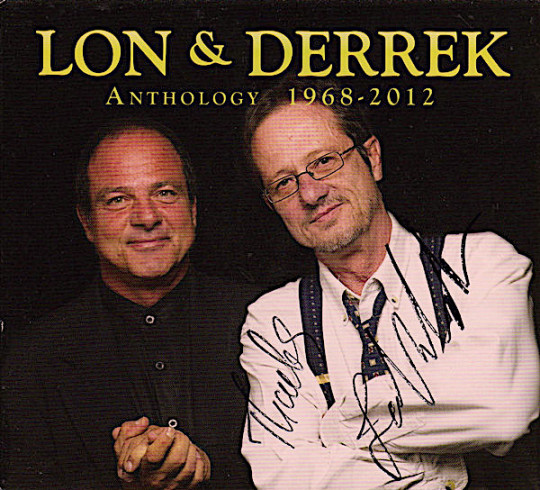



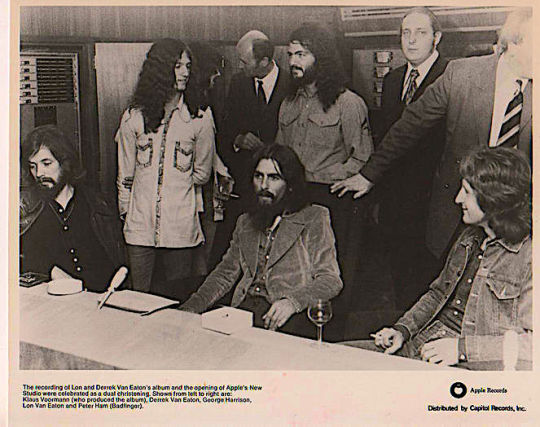
HAPPY BIRTHDAY to Casey Affleck, swamp pop singer Rod Bernard, Sid Bernstein, Joe Besser, Cantinflas, John Cazale, Kid Creole, Del The Funky Homosapien, Cecil B. DeMille, Leslie Duncan, George Hamilton, Roy Hay, Heintje, Mark Knopfler, Greg Langston (The Next, No Alternative), Ron Mael, Tiny McCloud, Pat Metheny, Sir Mix-a-Lot, Alexei Nikolaevich, Peter Ostroushko, Buck Owens, Marjorie Reynolds, Erwin Alexander Schrödinger, Lakeith Stanfield, Matt Thiessen (Reliant K), Stefanos Tsitsipas, Mladen Vukic, Porter Wagoner, Deborah Walley, Wednesday 13, Jane Wyatt, and recording artist, singer-songwriter, and multi-instrumentalist Derrek Van Eaton. Classic rock-philes and deep Beatles fans will recognize him from the brother band Lon & Derrek Van Eaton. John Lennon and George Harrison “discovered” them and signed them to Apple Records. Their excellent BROTHER album was co-produced by George with Klaus Voorman and launched a long association with George, Ringo Starr, Nilsson, and other legends in the Apple story. The brothers went on to become studio session favorites under producer Richard Perry, who hired them for recordings with Art Garfunkel, Martha Reeves, and Carly Simon. As a duo, the Van Eaton brothers have released sporadic works (notably their acclaimed 1996 cover of “Apple of my Eye” on the COME & GET IT Badfinger tribute album), and they’re still active in musical and spiritual pursuits. I met Derrek some years ago in church and picked his brains about a 1972 L&DVE concert Huntingdon PA that I stood outside at (I was but a lad with no ticket money). The last time Derrek and I crossed paths was at a Monkees concert in Denver. Even in passing conversation I can see the creative spark in Derrek’s eyes. Here’s one of my favorite Van Eaton cuts “Sun Song” https://www.youtube.com/watch?v=T5VSJmb2VI0 ...Meanwhile, HB DVE and thank you for your years of remarkable creativity and soul.
#derrekvaneaton #lonanderrekvaneaton #brother #applerecords #birthday #georgeharrison #ringostarr #klausvoorman #richardperry #peteham #badfinger
#Derrek Van Eaton#Lon and Derrek Van Eaton#brother#Apple Records#birthday#George Harrison#Ringo Starr#Klaus Voorman#Richard Perry#Pete Ham#Badfinger
6 notes
·
View notes